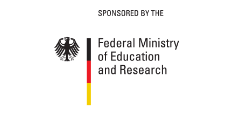
AMARE
AMARE is designed to optimize the signal-to-noise ratio in AFLP data sets (single or multiple primer combinations). It identifies potentially erroneous AFLP genotyping errors of GeneMapper (Applied Biosystems) or CEQTM System Fragment Analysis v.9.0.25 (Beckman Coulter) as the number of unreproducibly scored markers between replicated AFLP profiles of single individuals. As a measure of overall data quality, it simultaneously estimates general replicate error rates. Strength and accuracy of the approach depend on the number of replicates and whether they are representative for the whole data set.
As input file, AMARE reads exported AFLP binary character matrices in either GeneMapper (Applied Biosystems) or CEQTM System Fragment Analysis v. 9.0.25 (Beckman Coulter) table format. A mixture of both formats is not possible. AMARE concatenates multiple AFLP matrices and then analyzes the concatenated supermatrix in one process. The concatenated, unreduced supermatrix is printed out as separate text (.txt) file. Missing sample data in single matrices are replaced by "?", which are not further considered in the analyses. For each individual threshold set, AMARE generates i) a single log file reporting the masking of bins and replicates and ii) a character matrix in text (.txt) and nexus (.nex) format, if error rate conditions and minimum number of remaining bins are met. A summary of all threshold sets and corresponding error rates are stored in the main log file. Nexus files can be directly executed in other programs like PAUP. Additionally, AMARE plots a graphical overview of the original and each masked replicate matrix.
AMARE was written on Linux and works on WindowsPCs, Mac OS and Linux running systems. Input files originating from Windows, CRFL line feeds should be converted into Unix (LF) line feeds in advance, especially, if the user changes the operating system. This can be done in several editors like e.g. Bioedit, Notepad++ or Scite. AMARE usually replaces them, but might not succeed in every instance.
Examples of an unreduced and reduced matrix svg plot:
Graphical plots of each reduced and unreduced matrix of a given Minimum BIN Reliability threshold are printed in the new subfolder 'AMARE svg/'. Incongruent states of replicates are coloured red, equal (0,0) states are shown in light blue, equal (1,1) states in dark blue, and states of missing data in white. Replicates are listed vertically, BINs horizontally.






